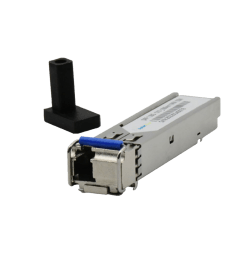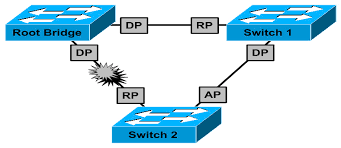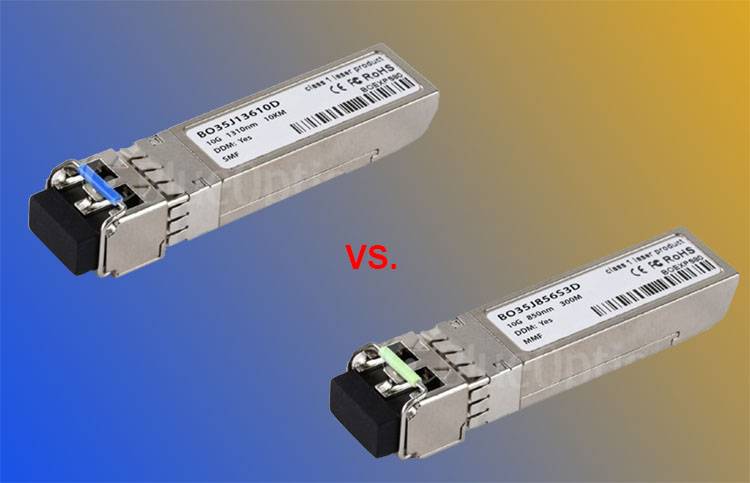Difference between sfp multimode sfp singlemode
There are two types of SFP transceivers, single-mode SFP and multimode SFP, both of which work with a different type of optical fiber. Singlemode fibers are used with singlemode SFP transceivers, while multimode optical fibers are used with multimode SFP transceivers. We discuss the difference between the two and what to look out for when using them.
What is single mode SFP optical module?
Single-mode fiber (SMF) has very close admittances for optical use. The core of this type of fiber is very small (about 9 µm) and the wavelength of the transmitted laser is narrower. This allows single fiber to have much higher bandwidth and to be transmitted over much longer distances. Single-mode SFP transceivers operate mostly at 1310 nm and 1550 nm wavelengths and are typically used over longer transmission distances, ranging from 2 to 160 km. Two single-mode fibers are used for transmission, one to transmit and the other to receive the optical signal from the SFP. There are also Single-mode Bidi SFPs with a Simplex connection that are used in pairs, if 1310 nm is transmitted and 1550 nm is received at one end, then the other SFP must transmit at 1550 nm and at 1310 nm to receive Using Bidi SFPs, this is possible through the WDM technique, which allows the transmission and reception of different wavelengths on a single fiber.
What are multimode SFP optical modules?
Multimode fiber (MMF) has a much larger core (50 µm) and typically uses longer wavelengths of light. For this reason, in optical fiber, the light used with multimode fiber has a greater ability to accept laser light. Optics used with multimode fiber are cheaper compared to those used with singlemode fiber. Typical multimode SFPs have wavelengths longer than 850 nm and are only used for short-distance transmission, typically from about 100 to 550 meters. Although multimode fiber is not capable of transmitting signals for longer distances, it is the cheapest solution for short distances when combined with multimode transmitters and receivers.
Because these two types of fiber, single mode and multimode are not compatible with each other. One of the main causes of inconsistency can be the selection of the wrong wavelength and, as a result, the wrong laser source, which leads to the fact that the size of the fiber core is wrong, and therefore data transmission is not carried out.
When choosing the right SFP module, we need to check the transmission distance and the wavelength we want. This helps us to select the exact SFP modules more efficiently.










